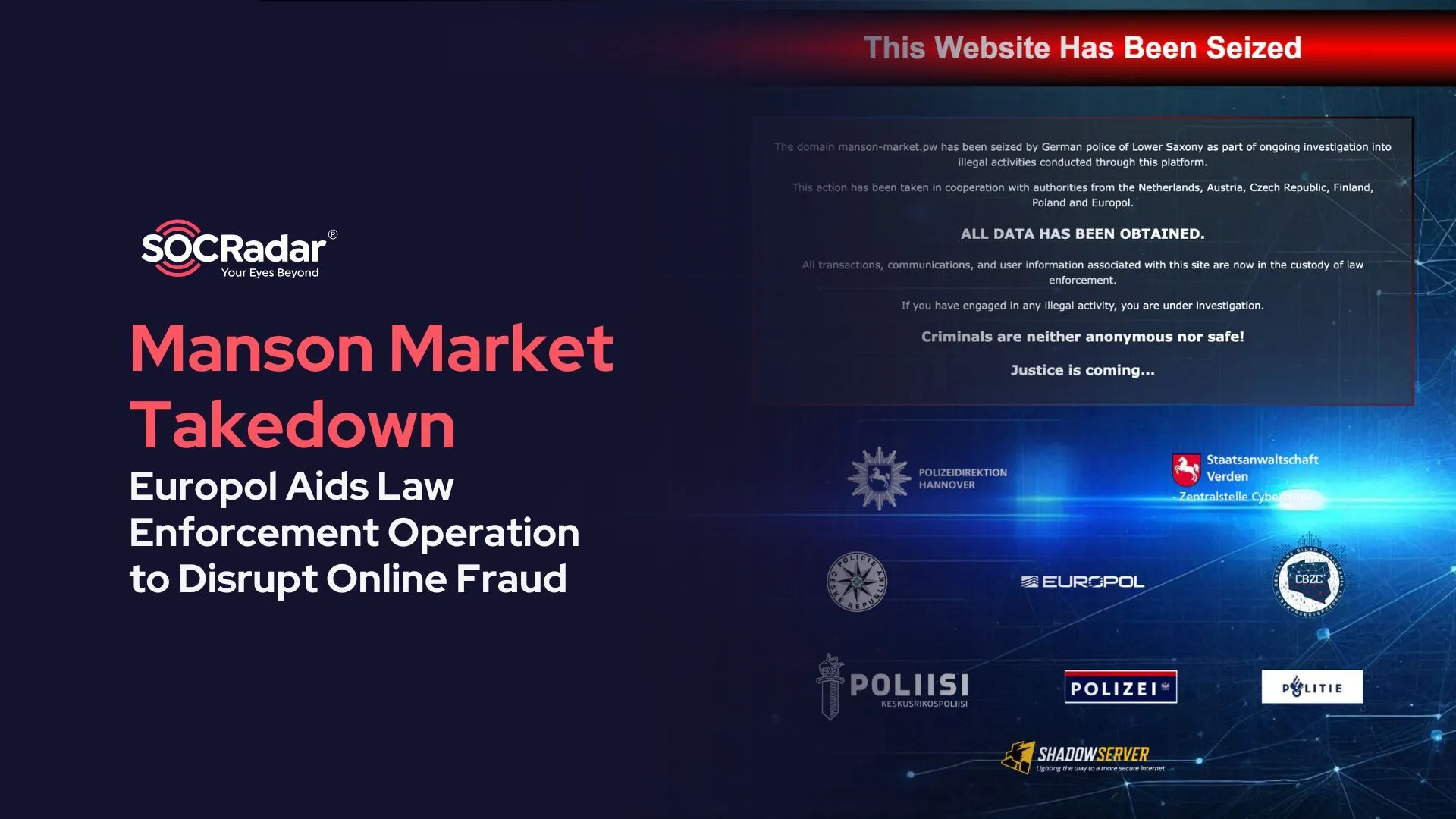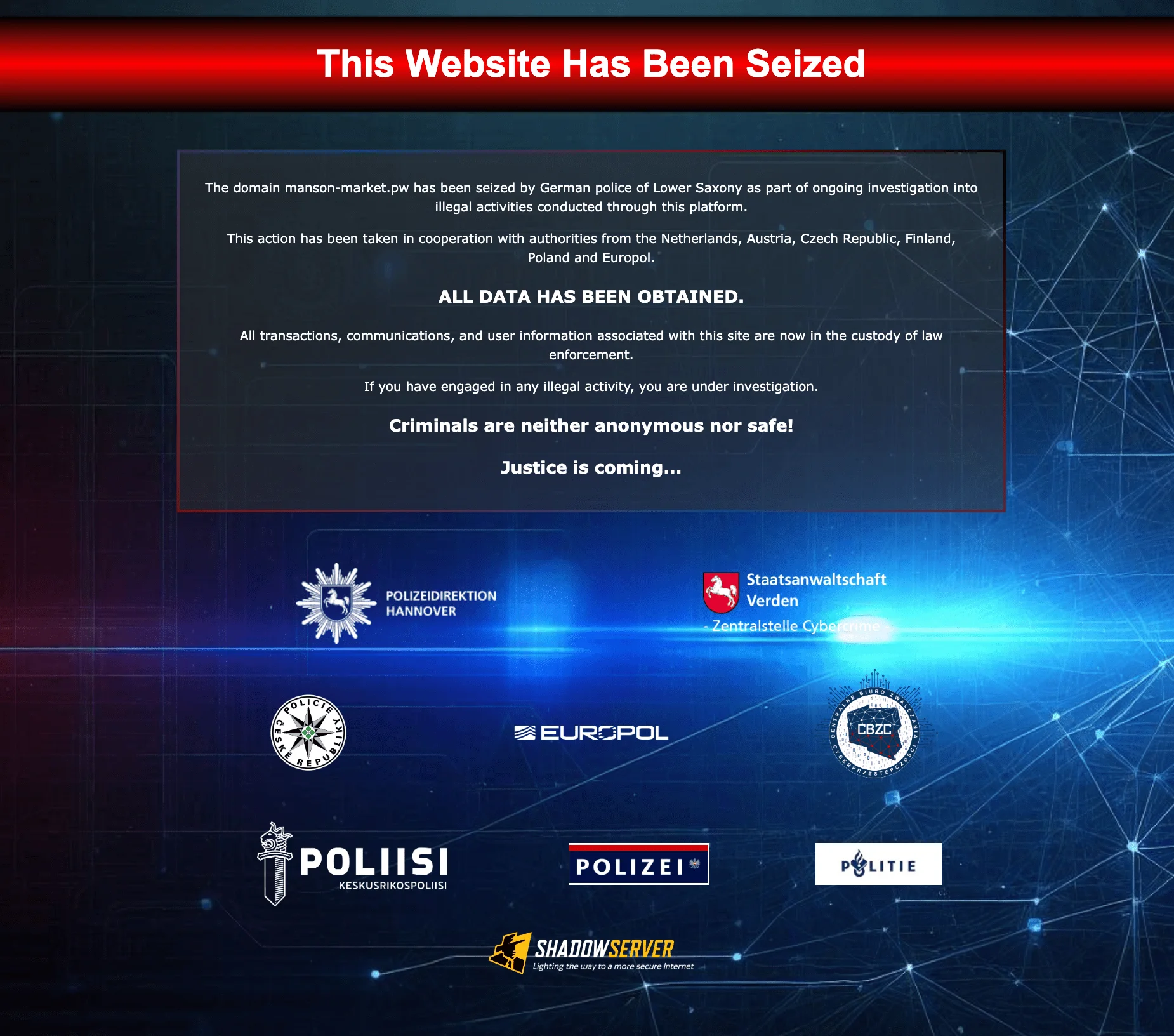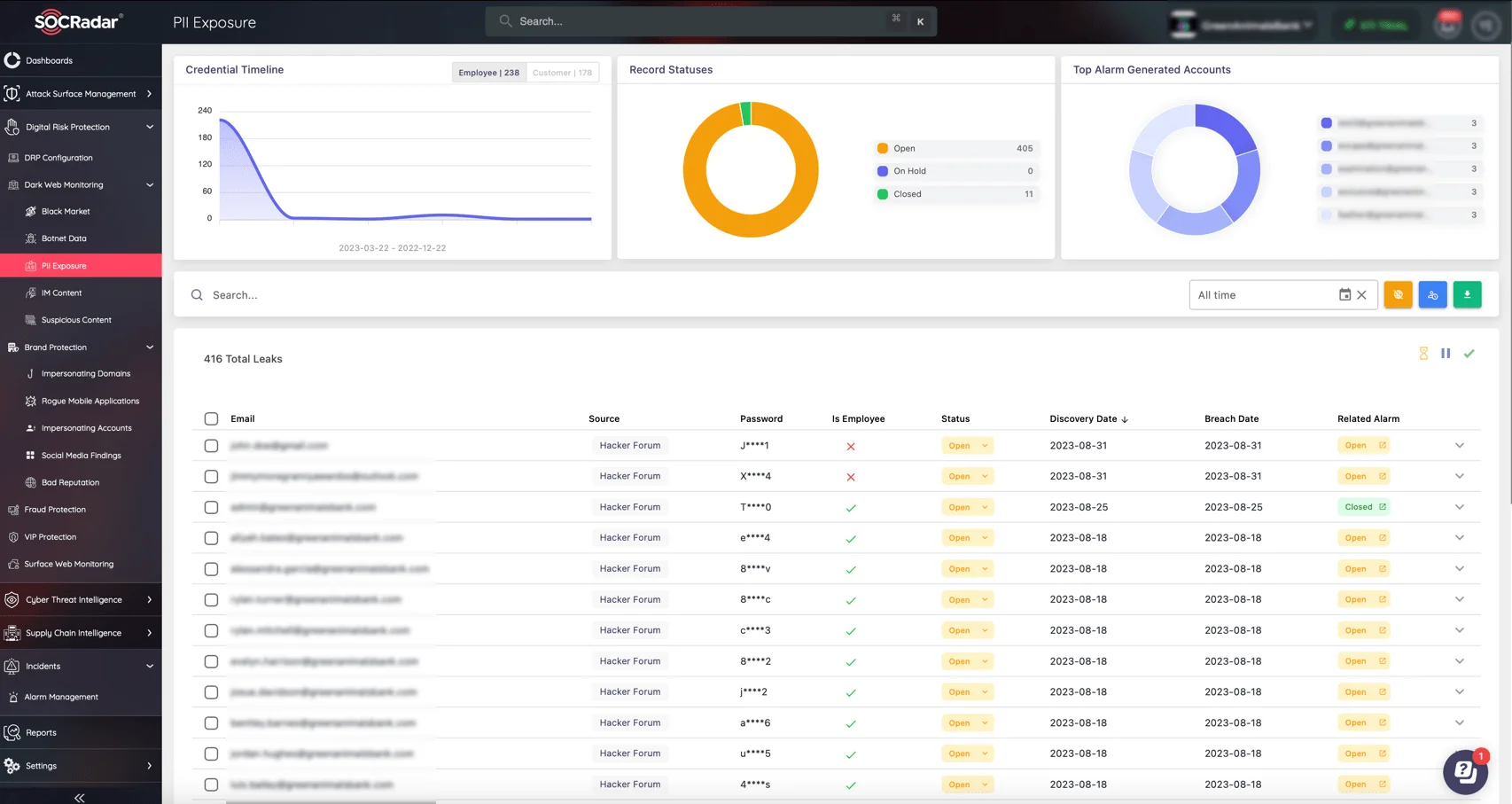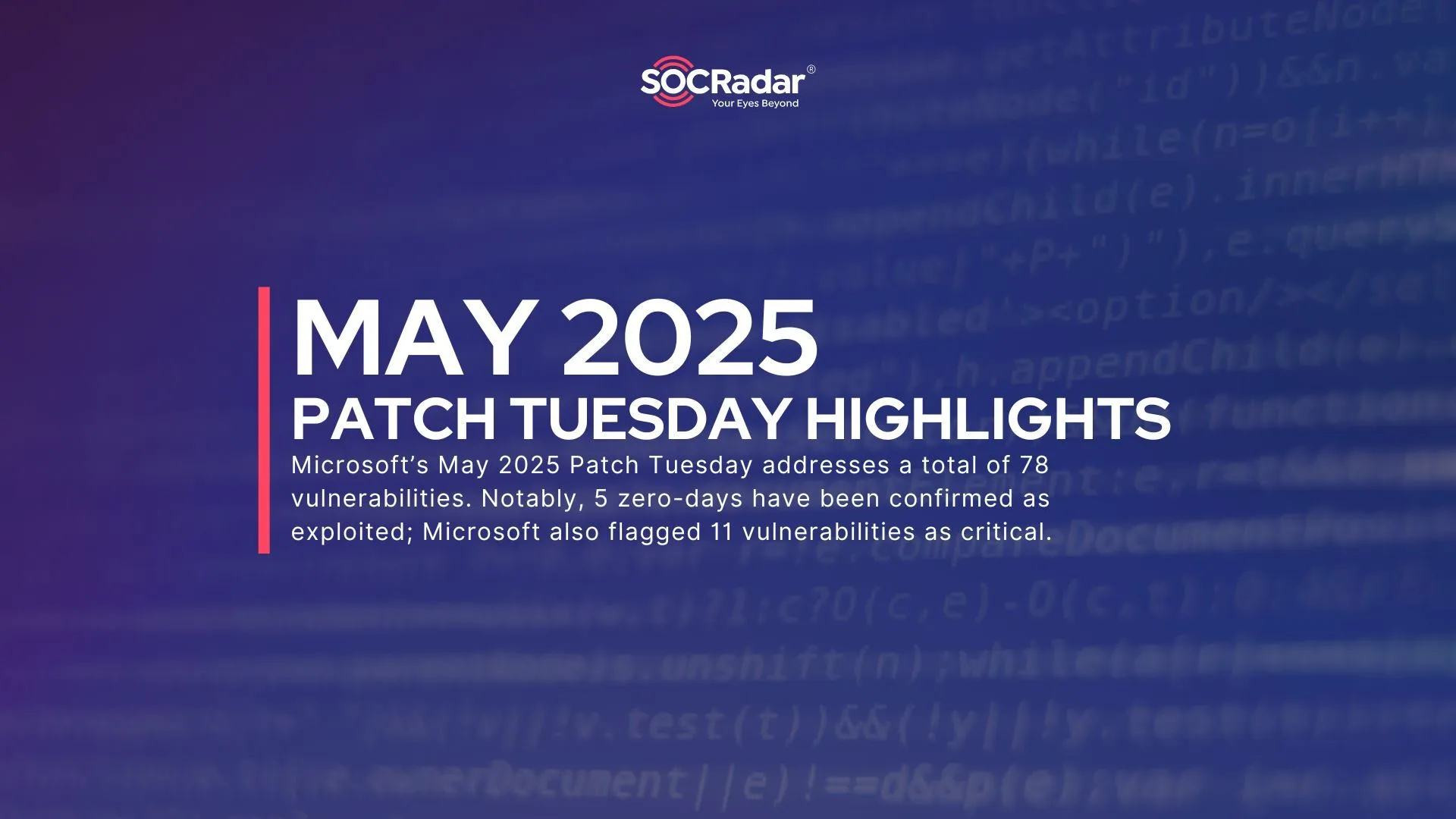
Manson Market Takedown: Europol Aids Law Enforcement Operation to Disrupt Online Fraud
The digital age has opened the way for increasingly sophisticated cybercriminal networks. These groups target individuals and businesses alike, causing significant financial and reputational damage. Recent global takedowns, such as the operation against the MATRIX encrypted messaging platform, express law enforcement’s unrelenting commitment to dispute organized cybercrime.
One of the latest victories in this fight is the dismantling of Manson Market, a clearnet marketplace specializing in large-scale online fraud. This operation, executed by law enforcement agencies across Europe with support from Europol, highlights the scale of these threats and the collaborative efforts required to counter them.

Manson Market has been seized by law enforcement
In this article, we look into the details of the Manson Market takedown, to let you explore how law enforcement brought down a hub for phishing and stolen data trading, and what this means for global cybersecurity efforts.
What is the Manson Market?
The Manson Market served as an illicit clearnet platform, allowing cybercriminals to trade stolen data. Unlike hidden marketplaces on the Dark Web, Manson Market carried out its illegal activities on the surface web, giving it greater reach and influence among potential threat actors.
It served thousands of users and circulated stolen data in a variety of formats. Threat actors could sort the available data by region or account balance, speeding up targeted fraud by allowing them to easily exploit sensitive data like credit card numbers, banking credentials, and personal information.
Manson Market also ran a network of bogus online stores designed to trick customers into sharing their payment information. The data was collected and added to the marketplace’s growing database.
Beyond its marketplace services, Manson Market used phishing and vishing tactics to populate its database. Europol reported that in one case, scammers impersonated bank employees in order to steal sensitive information such as security codes and residential addresses.
Continued Activity on Manson Market Telegram Channel
During takedown of Manson Market’s core infrastructure, its affiliated Telegram channel was still active, signaling that some threat actors tied to the market may still possess operational capabilities.
On December 4, the channel posted an announcement of a scheduled “refill,” claiming the addition of over 1,000 new credit card details.

A post in Manson Marketplace Telegram channel, signaling a refill of stolen CC (credit card) data
Launched in October 2024, this channel has been central to the distribution of stolen credit card information, including card numbers, expiration dates, and CVV codes, as part of a strategy to attract users and strengthen its reputation.
A Coordinated Crackdown on Criminal Infrastructure
The takedown of Manson Market concludes the investigations that began in the second half of 2022. Initial reports of fraudulent phone calls alerted authorities to the criminal operation, in which scammers impersonated bank employees to steal information, which was later traced back to the online cybercriminal market.
The operation was led by German authorities and included law enforcement agencies from Austria, Czechia, Finland, Germany, the Netherlands, and Poland, with Europol’s European Cybercrime Centre (EC3) playing an important role.
On December 4, 2024, coordinated actions in multiple countries resulted in the seizure of over 50 Manson Marketplace servers and the discovery of more than 200 terabytes of digital evidence. The authorities also confiscated €63,000 in cash and cryptocurrency, as well as 80 data storage devices, mobile phones, and computers.
During the operation, a 27-year-old suspect in Germany and a 37-year-old accomplice in Austria were apprehended; both currently in pretrial detention under European arrest warrants. These people are thought to play a significant role in running Manson Market, overseeing operations, and maintaining its infrastructure.
The Impact of Manson Market’s Operations
German authorities reported that at least 57 victims collectively suffered losses exceeding €250,000 due to the sale and reuse of stolen banking and credit card information. The marketplace’s ability to sort stolen data by region and account balance enabled criminals to execute highly targeted fraud, increasing their success rate while maximizing harm to individuals and organizations. Beyond the financial losses, phishing and vishing attacks are likely to have eroded victims’ trust in digital transactions.
To mitigate such risks, SOCRadar’s Surface Web Monitoring and Dark Web Monitoring solutions provide proactive measures to identify stolen data and prevent its further exploitation. These tools help organizations stay ahead of potential threats, ensuring both financial and reputational security.
Stolen data can quickly be weaponized if left undetected, posing ongoing threats to your organization. SOCRadar’s Surface Web Monitoring and Dark Web Monitoring modules help you take control by offering:
- Real-Time Threat Identification: Detect stolen data, such as credentials, customer records, or intellectual property, being traded across online forums, marketplaces, or Telegram channels.
- Proactive Alerts: Receive early warnings about stolen or leaked data, allowing your organization to act before the information is used maliciously.
- Mitigation Support: Access actionable intelligence and detailed reports to neutralize risks and protect your customers, partners, and business assets.

By leveraging SOCRadar’s monitoring capabilities, you can protect your organization, employees, and customers, detect fraud early, and mitigate risks that threaten your financial and operational resilience.
Looking Forward
The dismantling of Manson Market is another milestone in the global fight against cybercrime, proving the value of international cooperation and advanced investigative techniques. This operation, coupled with the recent takedown of MATRIX, exemplifies law enforcement’s tireless watch on criminal networks.
Businesses must implement proactive risk-mitigation strategies as cyber threats evolve. Leveraging tools such as SOCRadar’s monitoring and intelligence solutions can assist organizations in staying ahead of emerging threats and protecting their assets.




































